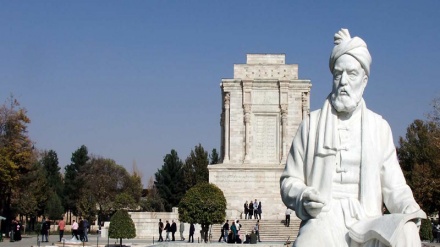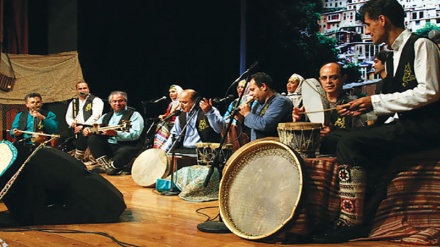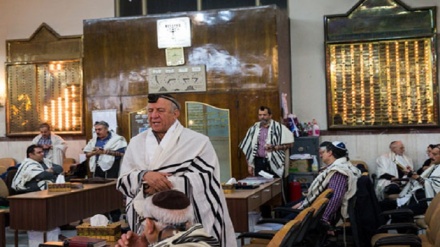Iran: Land of various ethnicities (7)
If you remember the previous episode, we talked about the cultural and social features of Lor people. It was also said that the Lor people include different groups one of which is the Bakhitaris.
Today we are going to discuss the social and cultural features of Bakhtiari people.
According to the historical writings Bakhtiari is the name attributed to a large group of Iranian tribes which are known as Lor-e Bozorg (Great Lor), too. Some researchers believe that the reason for this nomenclature is the proximity of the realm of Atabegs of Lorestan to the lands of Bakhitari ethnicities during the division of rule in Iran. The other Lor people are called Lor-e Kuchak who lived in the modern day Lorestan and Ilam provinces. During the period from Achaemenid to Sassanid era Lorestan was part of the vast land of Pars. After the advent of Islam and since the Abbasid era, it extended from the modern day Hamedan to Isfahan.
In the onset of the Qajar king Fat’h Ali Shah’s reign Bakhtiari belonged to Fars province and the River Karun separated Fars and Iraq-e Ajam (the area encompassing the central-western region of Iran including the cities such as Isfahan, Rey, Qazvin and Kashan). From 1831 onwards Bakhtiari was sometimes part of Isfahan and at other times part of Khuzestan.
Bakhtiari people have always attained political, military and commercial posts. They have played significant role in the Safavid troops, formation of Zand rule, Constitutional Movement, foundation of Oil Company and 8 year war imposed by the US through Saddam.
The first history on Bakhtiari people was written by Ali- Qoli Khan Bakhtiari, better known as Sardar Asa’d Bakhtiari. His book presents valuable subjects on Bakhtiari people. The culture of Lor people has been mixed with the culture of Turks and Arabs but it seems that they have more affinities with the Kurds. This is more evident if we look at their dialect which has some similarities with Kurdish. Their physical features also indicate that they are genuinely Iranian. The Lor people are akin to Pars ethnicities and Lori dialect - which some believe to be language – is said to be a relative of the Ashkanid and Sassanid Pahlavi languages. Due to the geographical situation and being surrounded by arduous mountains, the Lori dialect has remained almost intact.
Lor people have strong physique and average stature. They have brown eyes, black hair, profuse eyebrows, aquiline nose and protruded cheeks. Like many other clans and tribes, they are engaged in animal husbandry and to some extent agriculture. Some of them lead a nomadic life.
Bakhtiari clans have been living in swathes of lands extending from Fars to Isfahan, Khuzestan and Lorestan provinces. All Bakhtiaris are divided into two main clans of Haft Lang and Chahar Lang, each of which has several subdivisions. The summer and winter migration of Bakhtiaris takes place around Isfahan, Fars and Khuzestan provinces. They are scattered in Chahar Mahal-o-Bakhtiari, Khuzestan, Isfahan provinces and part of eastern Lorestan province. Some experts believe that the Bakhtiari people are from the Kurdish race while others maintain that they are akin to Lor people. Anyhow, their clothes, especially those of women, are similar to the clothes of Lor women.
Now, let us speak about the local ceremonies and customs of Bakhtiari people. One of them is the ceremony of asking for rain which is held in the time of drought and shortage of rainfall. This is the way the ceremony is held: A man with thin beard is chosen. Then artificial beard and mustache are put on his face and he covers his head with a large leather sack. Then he puts on loose clothes and another sack is put on his shoulders. After that many people gather around him and they go together to the doors of houses while they recite these poems:
Then a person, whose door is knocked at, gives them some flour or wheat but before that he pours some water on their heads. They continue this till night. Then they make bread with the flour while they hide a small stick in one of the breads. The loaves of bread are distributed among people to be eaten in public. The one in whose bread the stick is found will be jokingly beaten till someone comes and guarantees him saying that such and such day it will rain. If it doesn’t rain till the determined day the guarantor will beat him up jokingly so that another person come and guarantee him. This continues till it rains.
For national and religious feasts, especially Nowruz, birth anniversary of the Prophet and infallible Imams (Blessings of God upon them), Eid al-Azha, Eid al-Fitr and Eid al-Ghadir, Bakhtiari people attach high importance. On the verge of Nowruz the Bakhtiari clans change the location of their tents and settle at a green and pleasant area with adequate water. They stay in their tents in the eve of Nowruz but on the first day of Nowruz they go on visiting each other with special garments and a lopsided Lori cap. Bakhtiari people believe that they should take off black clothes before Nowruz, or else blessings and fertility will leave their clan and family. On 13th of Farvardin they adorn the goat-skin sacks with wreaths of flowers.
Bakhtiari people have rich music, too.
RM/ME


